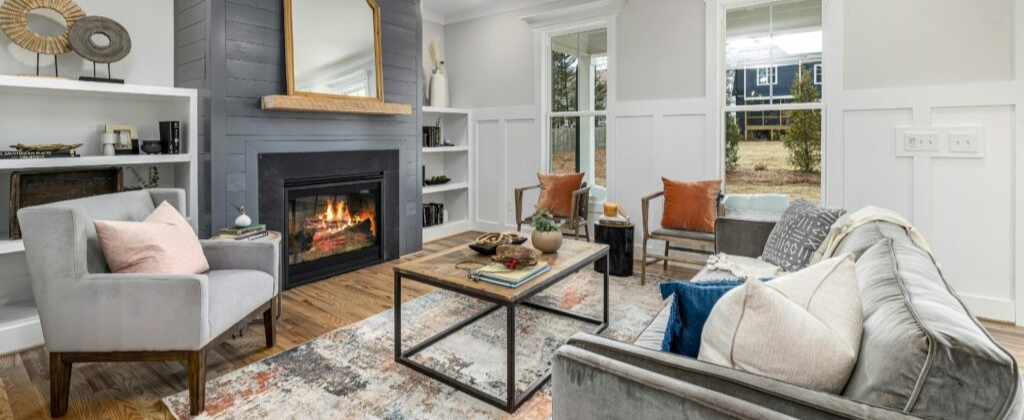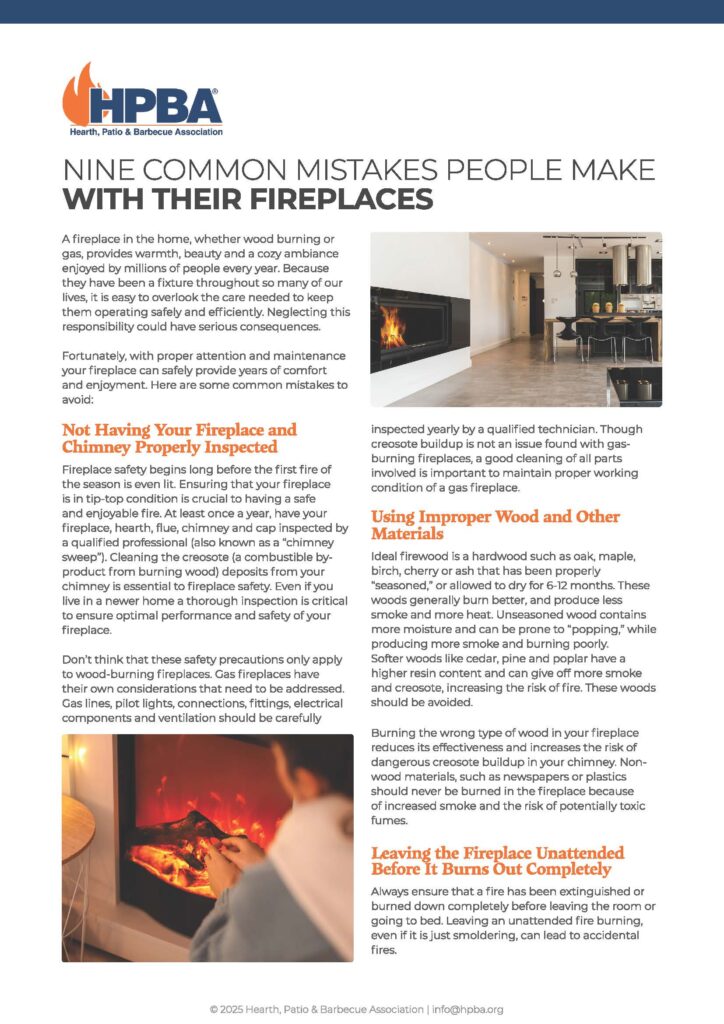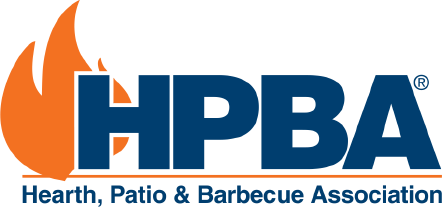
A fireplace in the home, whether wood burning or gas, provides warmth, beauty and a cozy ambiance enjoyed by millions of people every year. Because they have been a fixture throughout so many of our Iives, it is easy to overlook the care needed to keep them operating safely and efficiently. Neglecting this responsibility could have serious consequences.
Fortunately, with proper attention and maintenance, your fireplace can safely provide years of comfort and enjoyment. Here are some common mistakes to avoid:
Not Having Your Fireplace and Chimney Properly Inspected
Fireplace safety begins long before the first fire of the season is even lit. Ensuring that your fireplace
is in tip-top condition is crucial to having a safe and enjoyable fire. At least once a year, have your fireplace, hearth, flue, chimney and cap inspected by a qualified professional (also known as a “chimney sweep”). Cleaning the creosote (a combustible byproduct from burning wood) deposits from your chimney is essential to fireplace safety. Even if you live in a newer home a thorough inspection is critical to ensure optimal performance and safety of your fireplace.
Don’t think that these safety precautions only apply to wood-burning fireplaces. Gas fireplaces have their own considerations that need to be addressed. Gas lines, pilot lights, connections, fittings, electrical components and ventilation should be carefully inspected yearly by a qualified technician. Though creosote buildup is not an issue found with gas burning fireplaces, a good cleaning of all parts involved is important to maintain proper working condition of a gas fireplace.
Using Improper Wood and Other Materials
Ideal firewood is a hardwood such as oak, maple, birch, cherry or ash that has been properly
“seasoned,” or allowed to dry for 6-12 months. These woods generally burn better, and produce less smoke and more heat. Unseasoned wood contains more moisture and can be prone to “popping,” while producing more smoke and burning poorly.
Softer woods like cedar, pine, and poplar have a higher resin content and can give off more smoke and creosote, increasing the risk of fire. These woods should be avoided. Burning the wrong type of wood in your fireplace reduces its effectiveness and increases the risk of dangerous creosote buildup in your chimney. Non-wood materials, such as newspapers or plastics should never be burned in the fireplace because of increased smoke and the risk of potentially toxic fumes.
Leaving the Fireplace Unattended Before It Bums Out Completely
Always ensure that a fire has been extinguished or burned down completely before leaving the room or going to bed. Leaving an unattended fire burning, even if it is just smoldering, can lead to accidental fires.
Neglecting Smoke Alarms and Carbon Monoxide Detectors
Whether you use a fireplace or not, smoke alarms and carbon monoxide detectors are fundamental to the safety of any home. Ensure that you invest in a good set of smoke and carbon monoxide detectors and that you install and check them regularly, per the manufacturer’s instructions. The cost of high-quality detectors is a small price to pay to help avoid serious damage to property and life.
Neglecting to Make Sure That the Flue is Open
Before you light a fire, always make sure that the flue to your wood-burning or vented gas fireplace
is in the open position. You can often simply look up your chimney or feel if a cold draft is present. In other cases, you might need a flashlight to check. Regardless, acquaint yourself with your fireplace flue’s operation and make sure it’s open every time you build a fire. Don’t learn the hard way from a room full of smoke and a smell that can linger for weeks.
If you have an unvented gas fireplace, you will not have a flue, as it uses different technology to manage the exhaust gases. In any case, if you aren’t sure, consult with a qualified professional to be certain and safe.
Not Having a Fire Extinguisher Readily Available
Like smoke detectors and carbon monoxide alarms, fire extinguishers are a must have in every household. Have one easily accessible around fireplaces, the kitchen, garage and even the laundry room. More importantly, make sure that you and every member of the family knows where they are and how to use them.
Not Having a Proper Screen
Having a proper screen in place greatly reduces the risk of burning embers popping out of a woodburning fireplace and into the room, potentially causing severe damage or personal injury. Gas fireplaces, too, should always use a screen as it can help prevent unwanted contact between the hot (as much as 400 degrees Fahrenheit!) glass doors and occupants in the room. As always, keep a close eye on children and pets, as they are especially susceptible to injury from a fireplace that is not properly protected.
Carelessness with Fireplace Ashes
Always clean your fireplace regularly. Too many ashes can clog air vents and prevent fires from burning properly. Ashes are acidic, and if left unattended for too long can absorb moisture from the air and damage the masonry and metal components in the fireplace. Note that live embers buried in ashes can burn for several days. Always dispose of ashes in a proper metal container and store at least ten feet away from the house and other combustible materials.
Do not use a household vacuum cleaner to remove fireplace ashes, as they often contain live embers that can damage the equipment. Ash is usually finer than most household dust and can pass through the vacuum’s filter and into the air in the room. Consider purchasing a special vacuum cleaner designed specifically for cleaning fireplaces.
Mounting a TV Over the Fireplace
Given that the fireplace is often the focal point of a room, it seems logical to put a TV in the same space. Most TV manufacturers, however, discourage this practice, as the heat from the fireplace can damage the TV. Also, the optimal viewing height for a TV is usually much lower than the height above the fireplace. Consider a different location for the TV and leave the space above the mantle for other items that won’t be damaged by the heat.
In summary, most mistakes people make regarding their fireplaces are easy to avoid. Investing a little time in proper safely precautions beforehand will provide peace of mind and enhance the unique enjoyment your fireplace has to offer. As always, if you have any questions or concerns, reach out to your local fireplace professionals. They’re always glad to help!
Download Our Nine Common Mistakes That People Make With Their Fireplaces as an Info Sheet:

